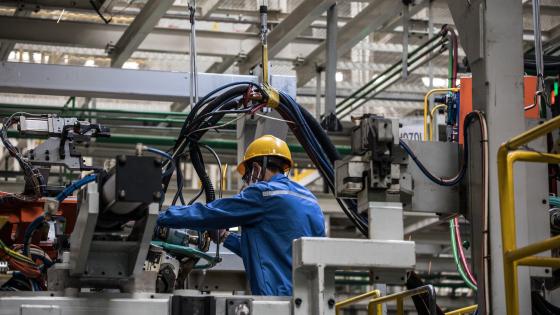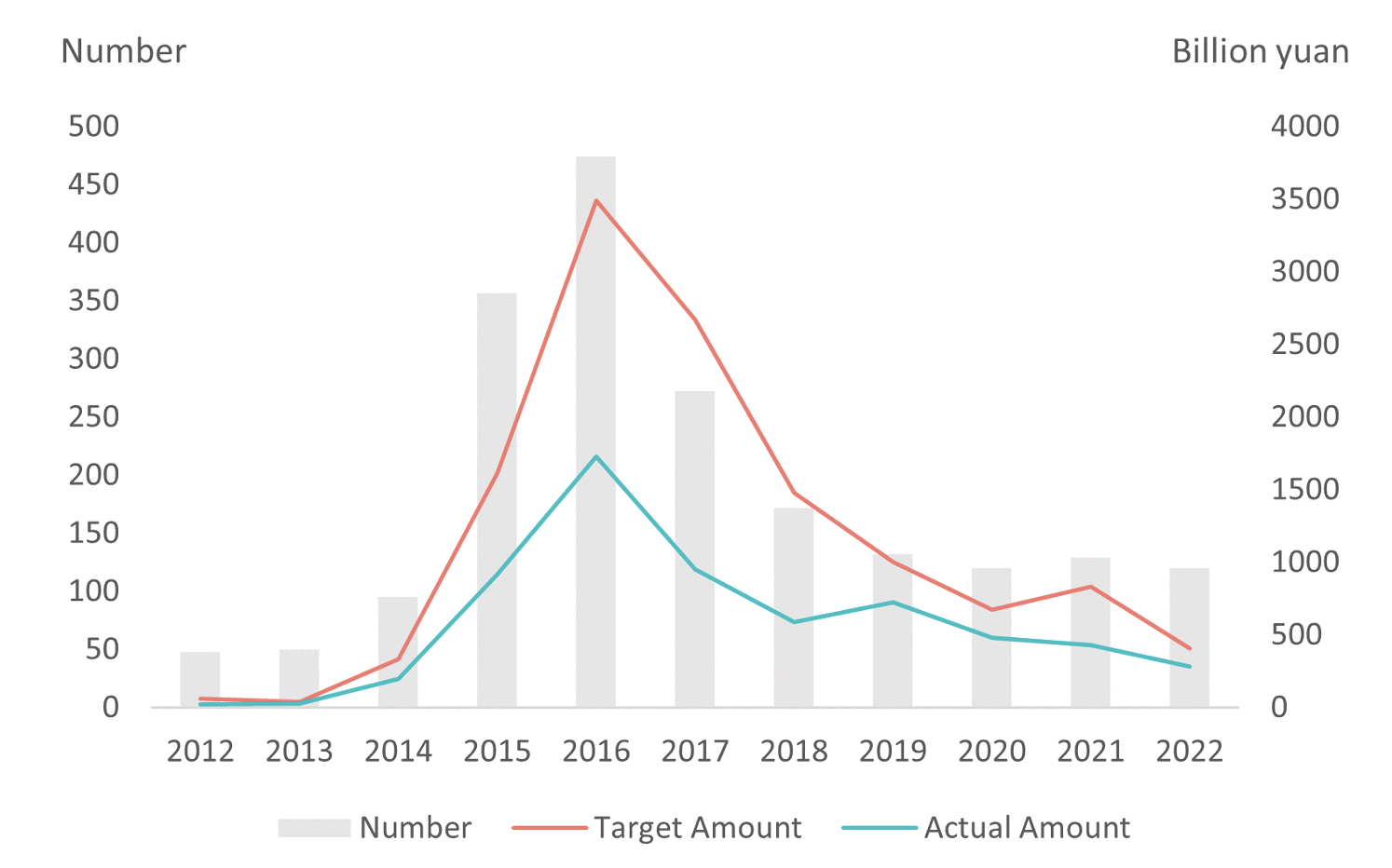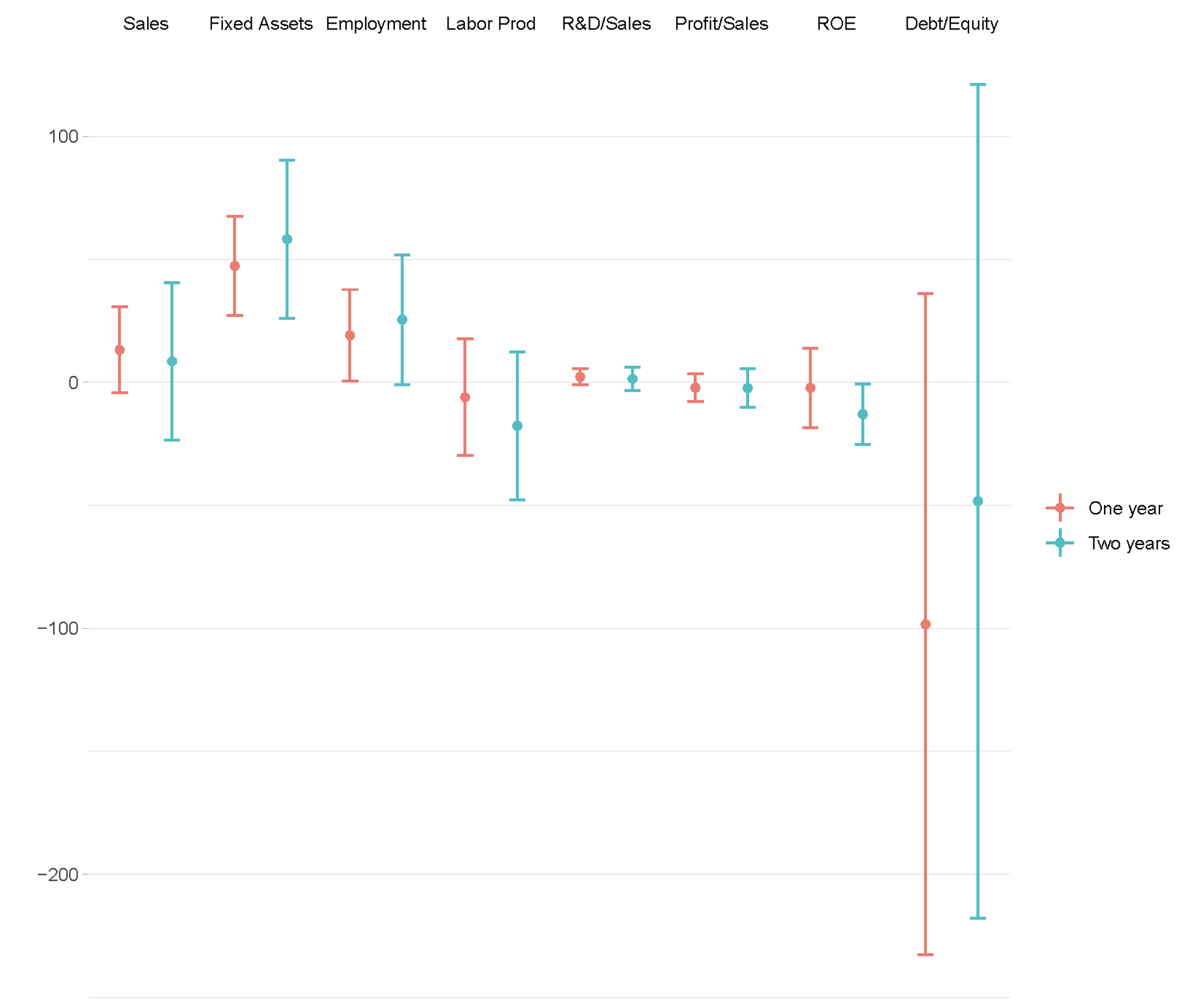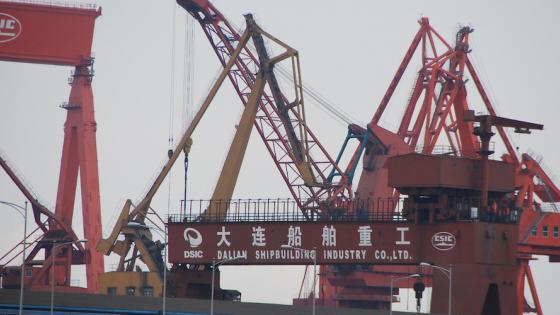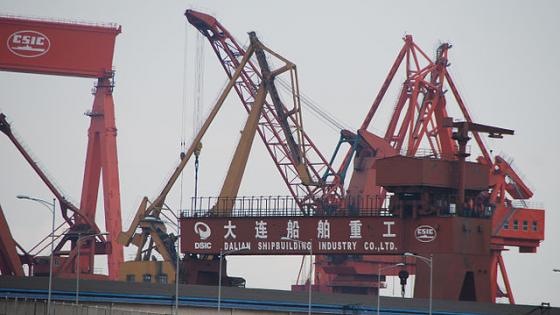Industrial guidance funds (IGFs) are China’s public-private investment funds collected from government agencies, financial institutions, corporations, private equity funds, public pensions, and other financing entities aiming to “optimize industrial structure.” IGFs have attracted attention as a policy instrument for directing a wide range of capital from the whole society into venture capital and early-stage technology-based small and medium-sized enterprises. According to Zero2IPO Research (2023), a total of 2,107 funds were established or in progress as of the end of 2022, and their target and actual amount of investment summed up to RMB 12.84 trillion and 6.51 trillion, respectively. Figure 1 shows the number and the investment amount of new funds by year. Considering that annual fiscal subsidy related to industrial policy is in the order of 100 billion yuan, the role IGFs play is very important in China’s industrial policy today.
Figure 1 Number and investment amount of new industrial guidance funds
Source: Zero2IPO Research (2023).
The US government heavily criticises IGFs as a bad industrial policy that distorts the market and undermines the fairness of competition. For example, its report titled “How China’s Economic Aggression Threatens the Technologies and Intellectual Property of the United States and the World” takes as an illustration one of the IGFs, China Integrated Circuit Industry Fund, and argues that the Chinese government uses those funds as an instrument to rapidly acquire foreign assets and technologies (White House Office of Trade and Manufacturing 2018).
Whether the funds constitute a bad policy is a complex issue. They might be an innovation-promoting ‘industrial policy of the 21st century’, and more market-oriented than traditional infant industry protection. Naughton (2021, p.110) argues that “the benefit of IGFs in the eyes of government policy-makers—and to a certain extent in reality—is that they create clearly specified responsibilities and incentives, and therefore permit professionalization and market-responsive behavior.”
Besides the above issue of market orientation and fairness, there are arguments that actual performance of IGFs is less than expected. Luong et al. (2021) point out that despite being intended to support early-stage companies, many funds end up investing in mature firms. According to the data of 2018 they cite, 6.41% of the IGF investments were in seed stage companies, 18.69% were in start-ups, 42.30% were in corporate expansion, and 31.21% were in mature stage companies. Furthermore, according to the authors, “overcapacity, diversion, incompetent management, and excessive government intervention are widespread, and so far, the funds have raised and deployed much less capital than intended” (p. 24). Gong et al. (2019) also admit that government involvement in operation and management affects fund performance. They refer to data that the average return on exit of government-led industrial investment funds as of March 2018 was less than one third of that of private equity funds and explain that government involvement causes the funds’ low returns, resulting in reduced attractiveness and financing capacity.
Gong et al.’s data casts doubt not only on the financing capacity of IGFs but also on their effect on the performance of firms receiving the investments. The low return might be thought of as a cost to promote innovation, but the cost might be too high if their investment has only limited effect on investee’s performance.
We examined the effect of IGF investment on firm performance by using the data from Orbis from Bureau van Dijk and PEdata from Zero2IPO, China. We listed IGFs from Pedata and searched Orbis for manufacturing firms they invested in. We then found from PEdata when these firms received investment and employed a difference-in-differences-matching approach to estimate the average treatment effect of the investment, selecting the control group through a combination of propensity score and exact matching.
We estimated the effects on sales, fixed assets, employment, labour productivity, R&D/sales ratio, profit/sales ratio, return on equity, and debt/equity ratio after one and two years of investment. Figure 2 shows the result.
Figure 2 One- and two-year effects of industrial guidance fund investment
Notes: Circles and vertical lines denote average treatment effect on the treated (ATT) estimates and 95% confidence intervals, respectively. They are changes in the deviation from the average percentage growth rate (sales, fixed assets, employment, and labour productivity) or the average percentage ratio (R&D/sales, profit/sales, return on equity (ROE), and debt/equity).
The effects on fixed assets and employment are significant. Firms that received investment from the fund increased their fixed assets by approximately 50 percentage points and their employment by 20 percentage points above average levels. However, the effects on sales and R&D intensity are not significant and productivity might have decreased. The effects on profit, return on equity (ROE), and debt ratios are also ambiguous.
Our estimate is limited by the fact that although we made a list of more than 3,000 IGFs, we could find less than 300 investees with minimum required data, and the number was reduced to at most 126 after matching the controls. The sample might not be large enough, and for this reason we could only estimate the effects after one and two years. However, our result that the effects are only apparent on fixed assets and employment is consistent with the data that return on investment was low. It seems that at least to this point, actual performance of IGFs is less than expected not only in terms of financing capacity but also in their effect, and that focused attention needs to be maintained on this issue.
Authors’ note: This column is based on prior research by the authors (Kajitani, Chen, and Mitsunami 2022), which received generous financial support of Japan Society for the Promotion of Science KAKENHI Grant Number JP20H04405.
References
Gong, Y, K Zhang, Q Yuan and K Luo (2019), “The Research on the Government Industry Guidance Fund Performance Evaluation”, Modern Economy 10(12): 2344-2354.
Kajitani, K, K Chen and K Mitsunami (2022), “How Do Industrial Guidance Funds Affect the Performance of Chinese Manufacturing Enterprises?”, RIETI Discussion Paper Series 22-E-110.
Luong, N, Z Arnold and B Murphy (2021), “Understanding Chinese Government Guidance Funds: An Analysis of Chinese-Language Sources”, CSET Issue Brief, March.
Naughton, B (2021), The Rise of China's Industrial Policy, 1978 to 2020, Academic Network of Latin America.
White House Office of Trade and Manufacturing Policy (2018), “How China’s Economic Aggression Threatens the Technologies and Intellectual Property of the United States and the World”, June.
Zero2IPO Research (2020), 2019 nian Zhongguo zhengfu yindao jijin fazhan yanjiu baogao, [Report on the Development of Chinese Government Guidance Funds 2019], Vol. 1, Zero2IPO Research.
Zero2IPO Research (2023), “Qingke 2022 niandu pandian: Xin sheli zhengfu yindao jijin 120 zhi, zhenghe youhua cheng changtai [2022 Annual Roundup: 120 New State-Managed Funds Launched, Integration and Optimization Become the Norm]”.
